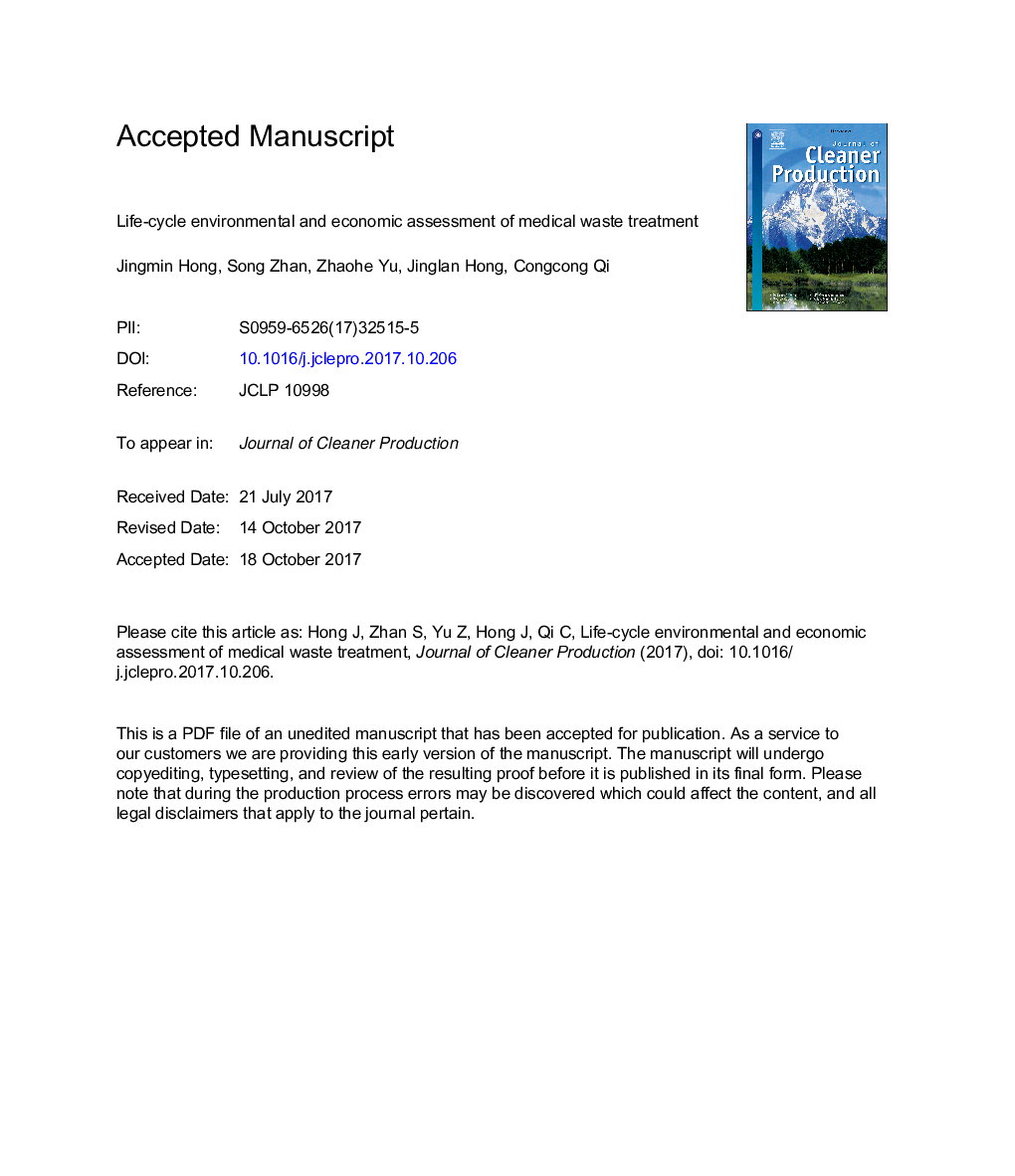| Article ID | Journal | Published Year | Pages | File Type |
|---|---|---|---|---|
| 8099288 | Journal of Cleaner Production | 2018 | 35 Pages |
Abstract
The environmental and economic impacts of three medical waste disposal scenarios (i.e., pyrolysis, steam sterilization, and chemical disinfection) were quantified via a cost-coupled life cycle assessment to quantify the effective technique for medical waste disposal. Results show that steam sterilization and chemical disinfection scenarios exhibit the highest overall environmental and lowest economic impacts, respectively, because of the differences in energy consumption. The overall economic burden is attributed to the cost of investment, labor, electricity, and human health protection for each scenario, whereas the environmental burden comes from energy and chemical production processes. The contribution of hydrogen chloride emission to the overall environmental burden is relatively low, although the direct hydrogen chloride emission is significantly higher when generated from medical waste pyrolysis than from municipal solid waste and industrial hazardous waste incineration. However, opposite results are observed for direct mercury emission. Effective measures to reduce the environmental burden include improving electricity and diesel consumption efficiency, reducing the use of chemicals (e.g., sodium hydroxide, lime, and chlorine oxide), selecting clean energy, and providing medical waste incineration with energy recovery. Similarly, effective measures to reduce the economic impact include optimizing labor and investment costs and electricity consumption.
Keywords
Related Topics
Physical Sciences and Engineering
Energy
Renewable Energy, Sustainability and the Environment
Authors
Jingmin Hong, Song Zhan, Zhaohe Yu, Jinglan Hong, Congcong Qi,
